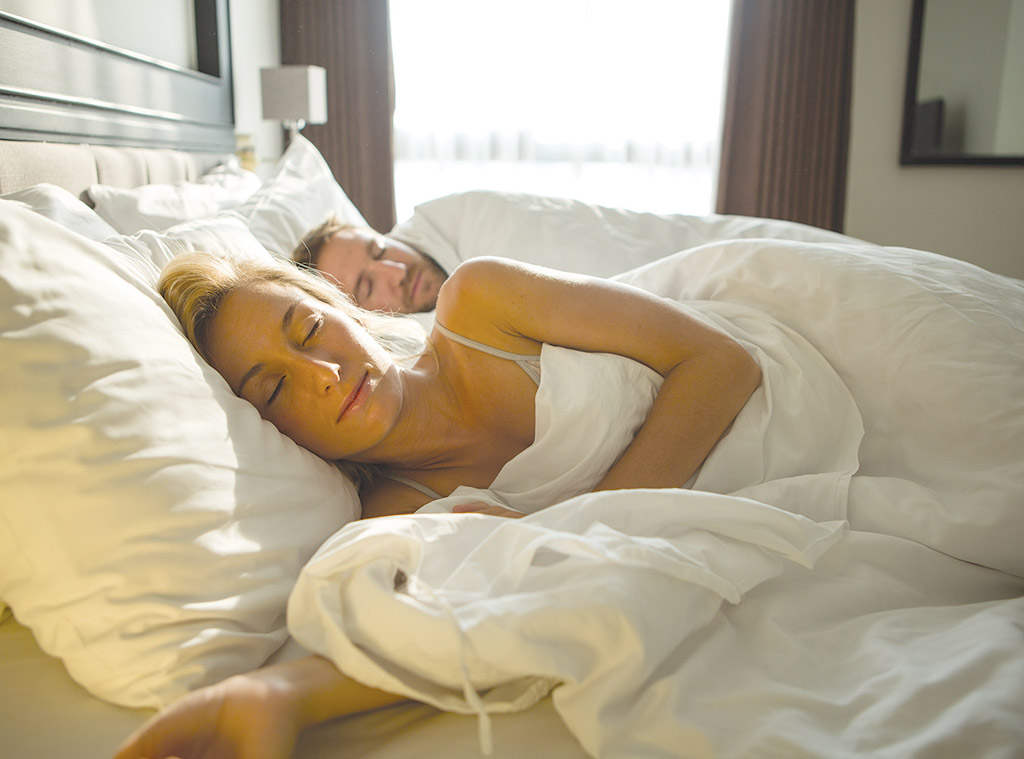SNORE NO MORE

Treatments for a Serious Health Condition
Couples sit across the desk from Dr. Brian Rotenberg every day. They are not there for marriage therapy, well not exactly, but often the relationships are suffering. Rotenberg is a specialist in otolaryngology; he is a head and neck surgeon at St. Joseph’s Hospital and runs a sleep surgery clinic. “I often have couples in my office who are yelling at each other because they literally can’t sleep together any longer.”
Often, it is the bed partner of the person who snores who initiates this visit because he/she is not sleeping well. Partners are also concerned because the snorer may have frequent periods of quiet, which often means he/she is not breathing.
Though it occurs in people in their 20s and 30s, snoring often becomes a bigger problem with age, according to Rotenberg. “As we get older, the soft tissues of our throats stretch out and (snoring) can get worse,” he explains. This can be compounded by weight gain and aggravated by heavy night meals, along with greater alcohol consumption.
Rotenberg says half of men and 20 to 30 per cent of women snore, which can cause relationship angst. But the biggest problem is sleep apnea, a condition that can be a moderate to serious health issue. “All people with apnea snore but not all snorers have apnea.”
Ten per cent of men and five per cent of women who snore have sleep apnea. This means that they stop breathing for 10 or more seconds several times each minute they are asleep. This causes oxygen levels in their blood to drop, impacting health in significant ways: high blood pressure that can result in heart disease and stroke; sleep deprivation that can cause auto accidents and short-temperedness.
First steps to deal with snoring: losing weight, avoiding fatty meals and excessive alcohol consumption later in the evening.
Most people who end up in Rotenberg’s office have been diagnosed with apnea through a sleep study. Though their bed partner is affected, most will also notice symptoms themselves: being sleepy during the day and nodding off, being short-tempered, feeling short of breath.
They often have a CPAP (continuous positive airway pressure) machine recommended to ease the issue. Because most of the cost of the machine is covered by OHIP, it is seen as a good option but has only about a 50 per cent success rate. Some do not care for the feeling of it and stop using it within a year.
With a mask, hose and pump, the CPAP sends a steady flow of air into the nose and mouth during sleep to keep airways open, allowing normal breathing. Londoner Nina Badr, 39, has used her CPAP for four years, since she was diagnosed with sleep apnea. “I feel so much better. I get up once or twice a night now, instead of several times. I won’t sleep without it, even if I take a cat nap.”
Instead of a full mask that covers both the nose and mouth, Badr uses one with small prongs that lets air flow into her nose. This makes sleeping on her side comfortable, which is often a complaint of those who stop using a CPAP.
Some turn to a dentist to deal with snoring and sleep apnea issues. Specialists, like Dr. David Rawson of TMJ and Sleep Therapy Office of London, create an oral device that opens the airway by holding the lower jaw downward and forward so the airway cannot collapse. Rawson describes it as looking like “two mouthguards joined together – a double mouthguard.”
After being assessed as a suitable candidate and understanding the financial impact (the average cost of $2,500 to $3,000 is not covered by OHIP or most benefit plans), the snorer’s impressions are made, mea-surements taken and sent to a lab. In about three weeks the oral device is ready to be fitted. According to Rawson this is where technique and patience come in.
“In the follow-ing weeks and months, it is slowly adjusted to find the maximum airway opening. A process we call titration.” He adds that this process helps ensure a high degree of compliance in using the device, making it a successful way for treating sleep apnea.
After being diagnosed with sleep apnea in his late 30s, Brian Brohm had unsuccessfully used a CPAP and an over-the-counter oral device but felt a custom-made one was out of his financial reach. At 44, the Toronto-nian was referred to Rotenberg to be assessed for a surgical solution.
He was found to be a suitable can-didate because he is not overweight and had nose and throat features that were correctable through surgery. “I’m selective about who I operate on,” Rotenberg says.
“They must have appropriate anatomy (a blocked nose, large tonsils or a long uvula) and have a BMI (body mass index) of less than 35.” In March 2021, Rotenberg performed an operation to correct Brohm’s devi-ated septum.
“It helped dramatically with my trouble breathing, but it doesn’t help the apnea,” Brohm says. In October, he again underwent surgery, to deal directly with apnea. Rotenberg reconstructed his uvula and removed his tonsils to open the throat passage. “It’s fantastic; I don’t snore anymore, which is phenomenal.”
Not only are Brohm and his wife getting better rest, but he also feels his quality of life is better because he is no longer tired all the time. The only downside is that his voice has changed somewhat; he finds some words harder to pronounce and chokes more easily.
Rotenberg says that these “will get better over time.” “I’m so happy with the results,” says Brohm.
